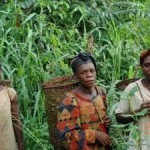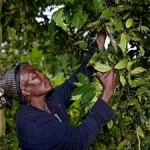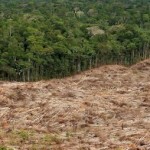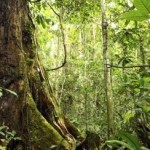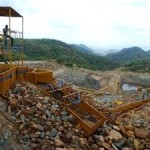Assessing the Impact of REDD+
Since 2008, REDD+ has been the world’s leading initiative to support forest conservation, and has pledged to respect the rights of indigenous peoples and local communities. The program promises to allow communities, corporations, and others to protect forests and sell the carbon they contain as offsets to polluting entities seeking to meet emissions targets.
“The research findings are doubly disappointing because in this same period a series of international initiatives – including REDD+ – committed to supporting land rights,” said Jenny Springer, Director of Global Programs for Rights and Resources Initiative. “In some regards, it is too early to assess these initiatives, but while REDD+ has previously focused on preparing carbon markets, it now clearly needs to prioritize real investment and direct support to tenure reforms or it will fail.”
REDD+ has been negotiated at the Conference of Parties (COP) to the United Nations Framework Convention on Climate Change (UNFCCC), and at the last COP (in Warsaw), consensus was reached on a broad array of questions on how the program can move forward, but the future of REDD+ will be turn on the issue of land and resource rights.
The next COP will take place in Lima, Peru, in November 2014. But Peru itself – with a substantial portion of the Amazon in its eastern half – has a spotty land rights record. Indigenous communities own or control almost 23 percent of Peru’s forestland, yet the government has granted more than 60 percent of the Peruvian Amazon to oil and gas concessions. These concessions overlap with four territorial reserves, five communal reserves, and at least 70 percent of the native communities in Peru.
The Private Sector: Part of the Problem or Part of the Solution?
A second Rights and Resources Initiative report, also released today, “Lots of Words, Little Action: Will the Private Sector Tip the Scales for Community Land Rights?” reviewed 2013 accomplishments, challenges and initiatives in the land rights arena. The report found more commitments – many of them quite promising – but few tangible results yet on the ground. Many of these commitments came from the private sector, where major agribusiness purchasers – including Asia Pulp & Paper, Unilever, Coca Cola, Wilmar and Nestlé – pledged to ensure that partners throughout their supply chains respect the land rights of indigenous peoples and local communities.
The implementation of previous commitments has not gone smoothly, however. For example, commitments from Rio Tinto in 2012 were not implemented globally in 2013, as the company’s projects in Mongolia and Mozambique pushed aside local communities living on land rich with gold, copper and coal.
Previous RRI reports underlined the partnership of governments and corporations in disregarding the rights of indigenous peoples and local communities. In an analysis of 12 emerging market countries, researchers found that at least one out of every three hectares licensed by for natural resource development overlaps with land inhabited by indigenous peoples and local communities. But the motivation for reform is clear: when these overlaps occur and communities lose their land, the conflicts that result can wreak havoc on the projects and the corporations’ bottom line, increasing operational costs by as much as 2800%.
This report also highlighted how violence against land rights advocates continues unabated, and discussed the continuing problems that Liberia has experienced in light of commitments to respect its citizens’ land rights.
In 2013, a draft audit from a government watchdog found that most of the $ 8 billion in contracts to tap the country’s wealth in land and natural resources were illegal – including two of the largest concessions, each for 220,000 hectare palm oil plantations that have violated the rights of communities living there. And officials were found to have awarded operators of mines and plantations the carbon rights to the land when those rights – worth a fortune under initiatives such as REDD+ – should have been given to the communities that live on the land in question.
Liberia’s proposed land policy would provide landmark protections for its indigenous peoples and local communities. It has not, however, been enacted into law yet.
“In 2014, everybody – governments, corporations, international organizations – needs to pick up the pace of implementation and move from words to actions,” said Andy White, coordinator of the Rights and Resources Initiative. “There is so much more that needs to be done, and it starts with the post-2015 Sustainable Development Goals and other global efforts to tackle poverty as well as climate change. The key to success lies in the recognition of community land rights. You cannot improve the lives of indigenous peoples and local communities if there’s always the threat of their land being sold out from under them.”
Check the following link to read/download the Full Report:
http://www.rightsandresources.org/annual-report/2013/
Source: Rights & Resources Initiative (RRI).


